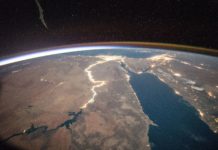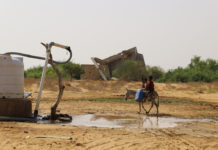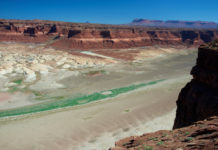Chennai, India is home to 9 million people – and they are running out of water. Local reservoirs and lakes are exhausted. Wells are running dry. The government is shipping in water by the truckloads to satisfy locals whose hopes were dashed when this year’s rains were far less than in earlier times. The global water crisis has arrived and it’s spreading.

India is the world’s largest consumer of groundwater. Groundwater includes underground water sources but excludes lakes and reservoirs. According to the Indian government, 12 major urban areas have been consuming groundwater at an unsustainable rate since 2013.
The Global Water Crisis Is Not An Indian Problem

This issue is affecting areas across the world. Last year Cape Town, South Africa became the first major industrialized city in the world to begin counting down the days until it ran out of water. This was known as “Day Zero,” the date when Cape Town would be officially dry and without water. Extreme measures were taken for new levels of water conservation. A surprise rainy season alleviated some of the stress in 2018 but Cape Town remains on the edge.
In 2008 Spain reported its national reservoirs were at half capacity even before the driest and hottest months of summer had arrived. A United Nations study projected that as many as 30 nations – not cities, but nations – will be water scarce by the year 2025.
Israeli water experts anticipate that half of the world will live in countries with chronic water shortages by 2050.

In 2015 Sao Paulo, Brazil’s water reservoirs were operating at 12 percent of capacity. Large parts of the reservoir’s surface were simply mud. At 20 million people Sao Paulo is the largest city in the western hemisphere. Many of its residents were experiencing 12-hour water cut-offs.
In the United States, the western part of the country has experienced ongoing droughts for years. In 2016 Lake Mead in Nevada, the largest reservoir in the United States in terms of capacity shrunk to its lowest level ever. Lake Mead is a water resource that supplies over 25 million people in Nevada, Arizona, and California.
Bans and water rationing were instituted in California. In 2009 a state law required a 20 percent per capita reduction in water use there but within 5 years experts were saying this was still not enough to ward off the effects of drought and the state’s diminishing water supply.

This Is Not About Climate Change
When covered in the popular media issues such as the global water crisis are frequently featured as a piece of the climate change crisis. In fact, climate change does play a role here, but that is not the whole story. It is not even the most important part of the story. The most important part of the story is the fact that man is causing these growing crises around the world. Mismanagement of water supplies by way of both overuse and pollution is a major issue that could also be leveraged to remedy the crises.

Another frequent common denominator in the various locations feeling the pressures of the global water crisis is population. In almost every place where water supplies are being exhausted, the population is exploding. It is a simple reality of supply versus demand. As the population grows demand increases and supplies diminish. Keep in mind water supplies are not only needed for human consumption and drinking. Water supplies are needed for agriculture. Crops and livestock consume a lot of water and as the population grows the need for crops and livestock also grows.
Sekhar Raghavan, director of the Rain Center in Chennai, India explained in a recent Washington Post interview, “This is a man-made crisis.”
But even while man has made the crisis, few governments around the world are offering any solutions to prevent it from growing worse. Drastic measures, as was the case in Cape Town, are necessary and those are not a popular political platform in any governing system. As a result, rather than taking action most governments where the water crisis is growing today are simply stalling and hoping against the inevitable.
This is going to get worse. It is going to get much worse!


